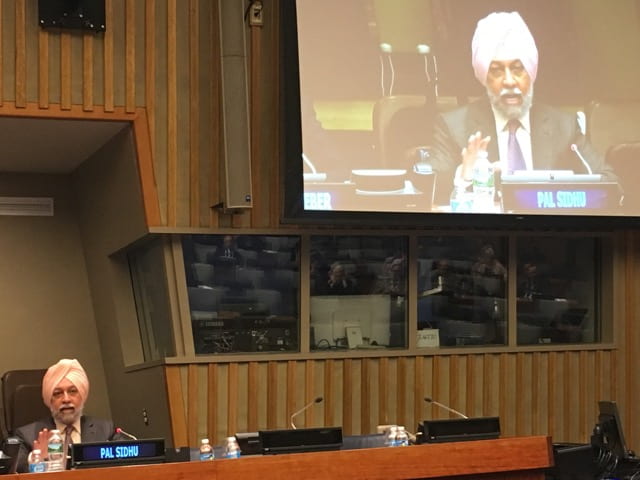by W. Pal Sidhu
(This text is from a presentation I made on October 13th at a side event of the First Committee of the 71st Session of the United Nations General Assembly on Nuclear Cruise Missiles)
Introduction:
Before examining the issue of nuclear armed cruise missiles (NACMs) a quick global geopolitical overview is warranted. The short post-Cold War period of cooperation between the five permanent members of the United Nations Security Council (the P5 in common parlance) has given way to greater direct interstate contestation between them today. Consider the US-Russia confrontation over Ukraine and Syria, the US-China tensions in the South China Seas, not to mention the latent conflict between China and US allies like Japan.
Three challenges:
It is against this volatile background that the presence and role of nuclear-armed cruise missiles have to be considered. NACMs pose three significant challenges:
First, the clear and present danger of their use – deliberate, accidental or inadvertent – by states that possess them (France, Russia and the US). Given the dual (conventional/nuclear) role of cruise missiles, this danger is even greater, especially when such missiles are air launched from a stealth bomber. The intended target country will not know if the missile is carrying a nuclear or a conventional warhead and will assume that it is the former. Moreover, unlike ballistic missile NACMs are extremely difficult to detect, track and defend against. Indeed, the Air Launched Cruise Missile is the last relic of the Cold War and should be done away with.
Second, there is a potential danger of the proliferation of this technology to other nuclear armed or nuclear weapon aspirant states, which do not presently possess this capability. The prospects of preventing such proliferation will be more challenging when some nuclear-armed states seek to keep their NACMs while denying it to others, especially at a time when P5 consensus for sanctions is unlikely.
Third, there is a real danger that such weapons might also find their way into the hands of non-state actors and terrorist groups. One nuclear-armed state in particular that is contemplating developing such weapons is also home to some of the world’s most dangerous terrorist groups. These terrorist groups have reportedly targeted nuclear bases in that country in the past and are likely to do so in the future. The prospect of terrorists armed with NACMs is too horrific to contemplate.
Three approaches:
Given these challenges, a proposal put forward by Sweden and Switzerland as part of the United Nations Open-ended Working Group taking forward multilateral nuclear disarmament negotiations offers three approaches to deal with this problem.
First, in the short term, it suggests that countries take steps to reduce risks associated with the existing NACMs. Given that presently only three countries are known to possess NACMs, and have a long experience of risk reduction, such steps could be developed at the bilateral and trilateral level. Perhaps the easiest step might be to keep the existing NACMs in storage (as was the case with the naval NACMs in the past). Such an initiative is imperative, especially given the tense state of relations between two of them – the US and Russia.
Second, in the medium term, the present possessor states should also resist the temptation of introducing new NACMs (such as the proposed US Long Range Stand Off cruise missile). This, as we know from the Cold War experience, will exacerbate existing tensions and contribute to a dangerous brinkmanship. Were the present possessors to take this bold stand and show leadership, it might pave the way for the creation of a new norm of not developing and fielding new nuclear weapons.
Third, in the long term (and assuming that no new nuclear weapons are introduced), there is a real possibility of establishing a taboo against developing and fielding NACMs (as is the case with nuclear use, which has now held for over 70 years). Such a global ban on NACMs, especially if it were to be negotiated in a multilateral setting, could be made binding.
A global NACMs ban treaty would not only preserve existing deterrence, including extended deterrence, at a lower (and less dangerous) level, but it would also strengthen the nuclear Non-Proliferation Treaty credentials of the nuclear weapon states, especially in the context of Article VI (which calls on these state to give up their nuclear weapons).
Conclusion:
While there might be some limited advantage in maintaining existing and developing new NACMs, they are out weighted by the problems that these weapons are likely to pose, not only for deterrence in an era of high tension but also to treaty obligations. In the long run there is more to be gained both in cold strategic terms and in terms of building new norms by ensuring the eventual ban of NACMs.
W.P.S. Sidhu is Visiting Clinical Associate Professor at New York University’s Center for Global Affairs and Non-Resident Senior Fellow at the Center on International Cooperation.
